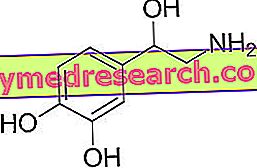Watch the video
X Watch the video on youtubeNutritional and health benefits
Olives are food with a HIGH content in complex energy lipids, the so-called triglycerides. Their composition in fatty acids is characterized by the prevalence of monounsaturated and, secondarily, by polyunsaturated and saturated.

Olives also provide NON-energetic and NON-saponifying lipids, mainly consisting of phytosterols (β-sitosterol, campesterol, stigmasterol), fat-soluble vitamins (tocopherols and carotenoids), chlorophyll and polyphenols. All these elements, with various metabolic functions, are linked by the high ANTIOXIDANT power and some play an essential role in the reduction of cholesterol, and therefore of cardiovascular diseases.
From the vitamin-soluble point of view, olives also contain a fair amount of Niacin (vit. PP), while the salt profile is mainly characterized by potassium and iron (less present in the oil).
Other characteristics of olives
It is curious to verify that ALL the olives stimulate the appetite and favor digestion; furthermore, the fatty acids contained in them (as well as in the oil), use an emulsifying power with respect to the fatty foods making up the meal. In practice, if inside a meal virgin oil or extra virgin olive oil were preferred to replace butter or seed oils, the overall digestibility of the meal would be improved. NB . Obviously, this characteristic subordinates to the energy importance of the meal, to the total quantity of fat and to the consumption portions.
Black olives contain less carbohydrates and are more digestible than green ones, but have a slightly higher lipid and caloric content. Olives preserved in brine are very rich in cooking salt, therefore sodium; therefore, they should be consumed in moderation (especially by those suffering from hypertension and kidney dysfunction); we also remind you that the conservation of olives has a decisive effect on the vitamin content and in particular that of thiamine (vit. B1) and other more oxidizable ones.
Nutritional values
Nutritional composition of: "Preserved olives, tableware", "Olives, black", "Olives, greens" and "Olives, pickled greens" - INRAN Food Composition Tables
| Nutritional composition for 100 grams of edible portion. Olives, table preserves: | ||||||||||||||||||||||||||||||||||||||||||||||||||||||||||||||||||||
 | ||||||||||||||||||||||||||||||||||||||||||||||||||||||||||||||||||||
| ||||||||||||||||||||||||||||||||||||||||||||||||||||||||||||||||||||
| Nutritional composition for 100 grams of edible portion Olives, black: | ||||||||||||||||||||||||||||||||||||||||||||||||||||||||||||||||||||
 | ||||||||||||||||||||||||||||||||||||||||||||||||||||||||||||||||||||
| ||||||||||||||||||||||||||||||||||||||||||||||||||||||||||||||||||||
| Nutritional composition for 100 grams of edible portion Olives, greens: | ||||||||||||||||||||||||||||||||||||||||||||||||||||||||||||||||||||
 | ||||||||||||||||||||||||||||||||||||||||||||||||||||||||||||||||||||
| ||||||||||||||||||||||||||||||||||||||||||||||||||||||||||||||||||||
| Nutritional composition for 100 grams of edible part Olives, green in brine: | ||||||||||||||||||||||||||||||||||||||||||||||||||||||||||||||||||||
 | ||||||||||||||||||||||||||||||||||||||||||||||||||||||||||||||||||||
| ||||||||||||||||||||||||||||||||||||||||||||||||||||||||||||||||||||



